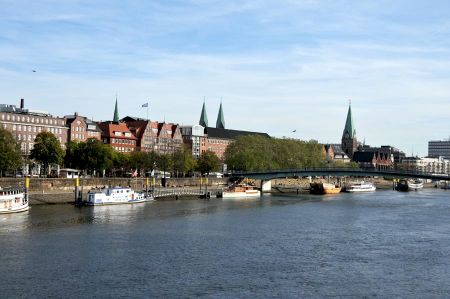Bremen - Harbour tour on the Weser river
- Written by Portal Editor
Bremen - After the interesting lectures by the mayor of the city of Bremen and the consul of the Republic of Turkey on the occasion of Turkey's 90th birthday in the historic hall of the Bremen town hall the evening before,
we wanted to take advantage of the wonderful autumn weather to go on a harbour tour with our hostess Laura.
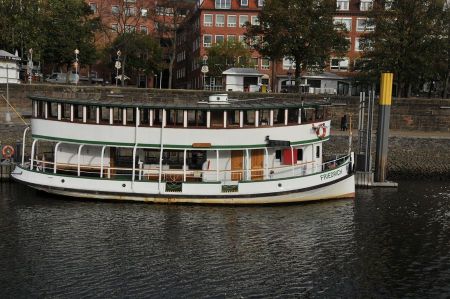 With a quick search on the internet, we quickly found out the departure time and location. A special feature worth mentioning also resulted from the so-called voucher books, which are handed out to "new citizens" of Bremen when they register, in order to make it easier to get to know the city. In addition to vouchers for fresh bread from a bakery, free copies from a printer and many others, it also included a voucher for a harbour tour. A great campaign that makes it easier to find your way around the city quickly and to get to know the streets and squares. Very worthy of imitation.
With a quick search on the internet, we quickly found out the departure time and location. A special feature worth mentioning also resulted from the so-called voucher books, which are handed out to "new citizens" of Bremen when they register, in order to make it easier to get to know the city. In addition to vouchers for fresh bread from a bakery, free copies from a printer and many others, it also included a voucher for a harbour tour. A great campaign that makes it easier to find your way around the city quickly and to get to know the streets and squares. Very worthy of imitation.
Bremen - Wonderful view of historic ships moored along the battlements
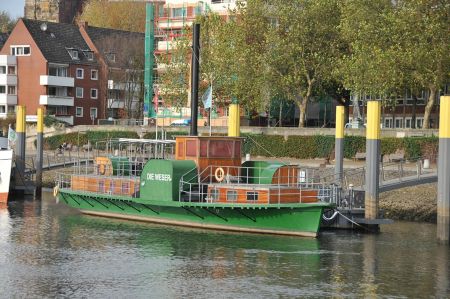 After just a few minutes' walk, crossing the Mayor Schmidt Bridge, we arrived at the Schlachte, where our ferry was supposed to depart at 1:30 p.m. Even from the bridge there was a wonderful view of the historic ships moored along the battleship, some of which are used as restaurants or hotel ships. Arriving at the departure pier, we were amazed at how many visitors had decided to take a harbor tour despite the late season. After punctual departure and a warming cocoa, we went to the foredeck to capture the Weser tour in pictures, a "seafaring" tour guide gave the relevant information.
After just a few minutes' walk, crossing the Mayor Schmidt Bridge, we arrived at the Schlachte, where our ferry was supposed to depart at 1:30 p.m. Even from the bridge there was a wonderful view of the historic ships moored along the battleship, some of which are used as restaurants or hotel ships. Arriving at the departure pier, we were amazed at how many visitors had decided to take a harbor tour despite the late season. After punctual departure and a warming cocoa, we went to the foredeck to capture the Weser tour in pictures, a "seafaring" tour guide gave the relevant information.
We passed the well-known Pannekoekschip "Admiral Nelson", the Weserburg, which today houses the Museum of Modern Art, drove under the Stephanie Bridge, then along the Downtown Terraces and finally reached the commercial ports, including the well-known timber port where the import timber was loaded be landed by rail or truck or for further processing in local companies.
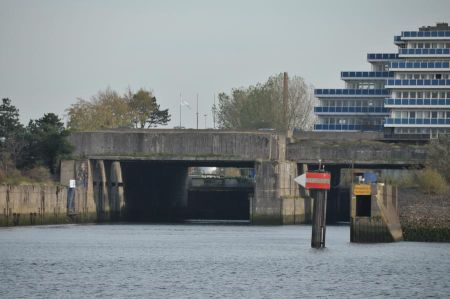 Since some of the port areas are no longer needed today, replanning will ensure luxurious residential buildings with a wonderful view of the Weser for the large-scale planned new development areas. Immediately afterwards we passed the huge "Waterfront Bremen" shopping centre, which, in addition to its own airport feeder, also has various cinemas and outdoor facilities.
Since some of the port areas are no longer needed today, replanning will ensure luxurious residential buildings with a wonderful view of the Weser for the large-scale planned new development areas. Immediately afterwards we passed the huge "Waterfront Bremen" shopping centre, which, in addition to its own airport feeder, also has various cinemas and outdoor facilities.
A little later we enter the Neustädterhafen and receive a little "lesson" on the subject of sea rescue from the ships in the harbour, here in particular about the free-fall lifeboats that we can see on board the huge freighters. Of course we don't need to explain at this point what function a lifeboat has on a ship in the event of danger, but the explanations regarding modern free-fall lifeboats were quite interesting, especially since some history was also included in the explanations.
English captain Frederick Marryat developed the first lifeboat
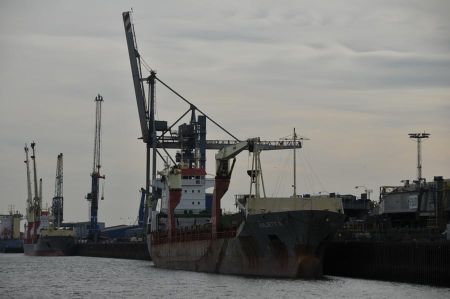 In 1820, English captain Frederick Marryat designed the first lifeboat, for which he received a gold medal from the Royal Humane Society. At first glance a rowing boat with 16 oars, one would assume. However, additional air chambers and cork inserts ensure that this model has a capacity of 60 people with high buoyancy. Today a model of the boat can be seen in the National Maritime Museum in Greenwich near London, which is considered the archetype of lifeboat construction. After the tragic accident of the sinking of the "Titanic", which is well known to all of us, in 1912 the industrialist Aaron Hirsch offered a prize of 20,000 marks to anyone who could construct a lifeboat that was seaworthy for at least 24 hours and "ready for use" within half a minute. should be. It's amazing that this prize was never awarded.
In 1820, English captain Frederick Marryat designed the first lifeboat, for which he received a gold medal from the Royal Humane Society. At first glance a rowing boat with 16 oars, one would assume. However, additional air chambers and cork inserts ensure that this model has a capacity of 60 people with high buoyancy. Today a model of the boat can be seen in the National Maritime Museum in Greenwich near London, which is considered the archetype of lifeboat construction. After the tragic accident of the sinking of the "Titanic", which is well known to all of us, in 1912 the industrialist Aaron Hirsch offered a prize of 20,000 marks to anyone who could construct a lifeboat that was seaworthy for at least 24 hours and "ready for use" within half a minute. should be. It's amazing that this prize was never awarded.
Last but not least, the world-famous film about the Titanic sinking has also contributed to the intensive attention to rescue technology on ships. Again and again, we hear about casualties in the news because the lifeboats were not properly served, panic led to casualties during the rescue, or the boats were simply not seaworthy enough to withstand high waves before being rescued by other ships. Only the development of so-called free-fall lifeboats has visibly contributed to the improvement in distress at sea, but primarily in the cargo ship sector.
Bremen - Development of so-called free-fall lifeboats has visibly
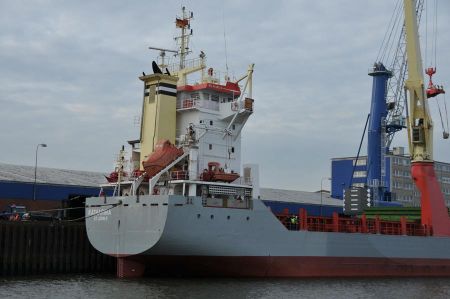 Free-fall lifeboats are closed lifeboats attached to the stern of a ship, which can be lowered into the water by an inclined launching device in an emergency without external help. They can be reached quickly from the crew quarters.
Free-fall lifeboats are closed lifeboats attached to the stern of a ship, which can be lowered into the water by an inclined launching device in an emergency without external help. They can be reached quickly from the crew quarters.
Free fall lifeboats are totally enclosed as they submerge for a short time upon hitting the water. A door at the rear serves as entry. The crew members sit opposite to the direction of travel. Since the boats hit the water from a great height (up to 40 meters) and with great force, all occupants must buckle up and also press their heads against the backrest to avoid injuries. Often the seats among the crew members are fixed. This should allow for faster boarding.
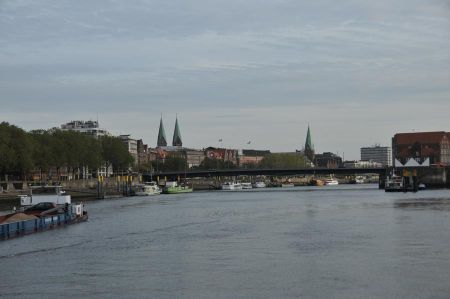 The trigger mechanism is internal and operated by the boat's operator. A hydraulic bolt is actuated with a lever, which lifts the free-fall boat so that it falls unhindered into the water. After that, the boat can be maneuvered out of the dangerous situation with its own engine. It is equipped with the items required by the international ship safety treaty for locomotion, for attracting attention as well as for the protection and survival of the occupants. Tankers also have free-fall lifeboats equipped with a mechanism that creates a fine spray around the boat to avoid catching fire in the event of an oil-on-water fire.
The trigger mechanism is internal and operated by the boat's operator. A hydraulic bolt is actuated with a lever, which lifts the free-fall boat so that it falls unhindered into the water. After that, the boat can be maneuvered out of the dangerous situation with its own engine. It is equipped with the items required by the international ship safety treaty for locomotion, for attracting attention as well as for the protection and survival of the occupants. Tankers also have free-fall lifeboats equipped with a mechanism that creates a fine spray around the boat to avoid catching fire in the event of an oil-on-water fire.
The closed lifeboats had their origin in an idea and close observation of the inventor Ernst Nicol. The first closed lifeboats on German seagoing vessels were installed on the two bulk freighters Praunheim and Berkersheim of the Unterweser shipping company in 1957, since then the development of free-fall lifeboats has progressed rapidly.
Behavior in an emergency and a protective cover for open boats
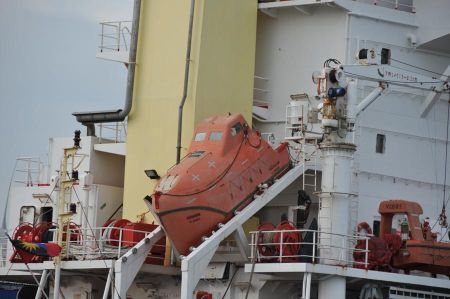 The items required by the International Maritime Organization (IMO) for locomotion, for attracting attention and for the protection and survival of the boat occupants must be present in a lifeboat. This includes aids for moving the lifeboat, buoyant oars, spare oars and steering devices such as oars and tillers, a set of sails (for open boats), scepters (oarlocks), a boat hook, an eyelet, two pützen (buckets), cut-off axes, a hurricane lantern with oil , waterproof packed matches, a compass, a sea anchor, safety and suspension lines, an oil container, emergency provisions, a drinking water container with the prescribed amount of content, scoop and drinking cups, parachute rockets, floating orange smoke signals, a first aid kit, a flashlight, a day signal mirror , knife with can opener, heaving lines, a signal whistle, fishing tackle, a board with rescue signals and explanations for what to do in an emergency and a protective cover for open boats. Motorized boats do not carry masts or sails. The number of belts is also reduced. The most important pieces of equipment include lifeboat distress beacons in various forms.
The items required by the International Maritime Organization (IMO) for locomotion, for attracting attention and for the protection and survival of the boat occupants must be present in a lifeboat. This includes aids for moving the lifeboat, buoyant oars, spare oars and steering devices such as oars and tillers, a set of sails (for open boats), scepters (oarlocks), a boat hook, an eyelet, two pützen (buckets), cut-off axes, a hurricane lantern with oil , waterproof packed matches, a compass, a sea anchor, safety and suspension lines, an oil container, emergency provisions, a drinking water container with the prescribed amount of content, scoop and drinking cups, parachute rockets, floating orange smoke signals, a first aid kit, a flashlight, a day signal mirror , knife with can opener, heaving lines, a signal whistle, fishing tackle, a board with rescue signals and explanations for what to do in an emergency and a protective cover for open boats. Motorized boats do not carry masts or sails. The number of belts is also reduced. The most important pieces of equipment include lifeboat distress beacons in various forms.
Visit to the DGzRS (German Society for the Rescue of Shipwrecked Persons) in Bremen
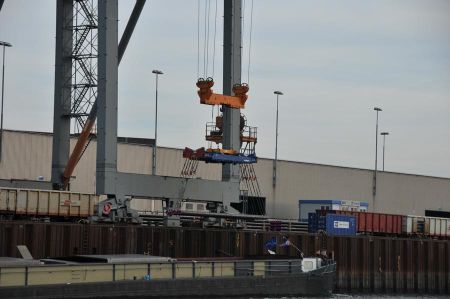 So much for the theory, which basically applies to all ships. Unfortunately, one notices again and again in seafaring that in practice it is often badly ordered with this equipment. In the event of a ship sinking or other life-threatening situations for the people on board, they should be able to retreat to the lifeboats and leave the danger area.
So much for the theory, which basically applies to all ships. Unfortunately, one notices again and again in seafaring that in practice it is often badly ordered with this equipment. In the event of a ship sinking or other life-threatening situations for the people on board, they should be able to retreat to the lifeboats and leave the danger area.
Since the first SOLAS agreement as a result of the sinking of the Titanic, rules and recommendations for the number, size and equipment of lifeboats on board seagoing merchant shipping have been drawn up, but these are often not complied with.
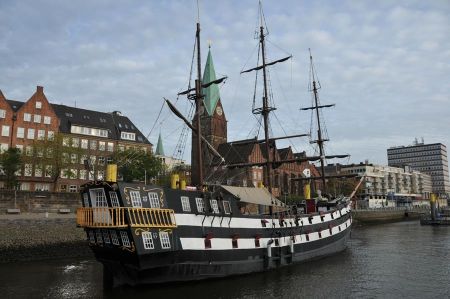 A very interesting insight into the rescue technology on ships was probably a special highlight during our harbour tour. In addition to exploring the ports of Bremen, our port tour also provided a deep insight into sea rescue, which we will soon deepen with a visit to the DGzRS (German Society for the Rescue of Shipwrecked Persons) in Bremen.
A very interesting insight into the rescue technology on ships was probably a special highlight during our harbour tour. In addition to exploring the ports of Bremen, our port tour also provided a deep insight into sea rescue, which we will soon deepen with a visit to the DGzRS (German Society for the Rescue of Shipwrecked Persons) in Bremen.
Please read as well:
Bremen's Schnoor district and famous Böttcher Street
The Schnoor - Bremen's most famous visitor magnet
-
 Bremen - tour along ships in the harbour
Bremen - tour along ships in the harbour
Bremen - tour along ships in the harbour
Bremen - tour along ships in the harbour
-
 Bremen - tour along shipsin the harbour
Bremen - tour along shipsin the harbour
Bremen - tour along shipsin the harbour
Bremen - tour along shipsin the harbour
-
 Bremen - tour along shipsin the harbour
Bremen - tour along shipsin the harbour
Bremen - tour along shipsin the harbour
Bremen - tour along shipsin the harbour
-
 Bremen - tour along shipsin the harbour
Bremen - tour along shipsin the harbour
Bremen - tour along shipsin the harbour
Bremen - tour along shipsin the harbour
-
 Bremen - tour along shipsin the harbour
Bremen - tour along shipsin the harbour
Bremen - tour along shipsin the harbour
Bremen - tour along shipsin the harbour
-
 Bremen - tour along shipsin the harbour
Bremen - tour along shipsin the harbour
Bremen - tour along shipsin the harbour
Bremen - tour along shipsin the harbour
-
 Bremen - tour along shipsin the harbour
Bremen - tour along shipsin the harbour
Bremen - tour along shipsin the harbour
Bremen - tour along shipsin the harbour
-
 Bremen - tour along shipsin the harbour
Bremen - tour along shipsin the harbour
Bremen - tour along shipsin the harbour
Bremen - tour along shipsin the harbour
-
 Bremen - tour along shipsin the harbour
Bremen - tour along shipsin the harbour
Bremen - tour along shipsin the harbour
Bremen - tour along shipsin the harbour
-
 Bremen - tour along shipsin the harbour
Bremen - tour along shipsin the harbour
Bremen - tour along shipsin the harbour
Bremen - tour along shipsin the harbour
-
 Bremen - tour along shipsin the harbour
Bremen - tour along shipsin the harbour
Bremen - tour along shipsin the harbour
Bremen - tour along shipsin the harbour
-
 Bremen - tour along shipsin the harbour
Bremen - tour along shipsin the harbour
Bremen - tour along shipsin the harbour
Bremen - tour along shipsin the harbour
-
 Bremen - tour along shipsin the harbour
Bremen - tour along shipsin the harbour
Bremen - tour along shipsin the harbour
Bremen - tour along shipsin the harbour
-
 Bremen - tour along shipsin the harbour
Bremen - tour along shipsin the harbour
Bremen - tour along shipsin the harbour
Bremen - tour along shipsin the harbour
-
 Bremen - tour along shipsin the harbour
Bremen - tour along shipsin the harbour
Bremen - tour along shipsin the harbour
Bremen - tour along shipsin the harbour
https://www.alaturka.info/en/germany/hanseatic-bremen/6024-harbour-tour-on-the-weser-in-bremen#sigProId381c06ed39
